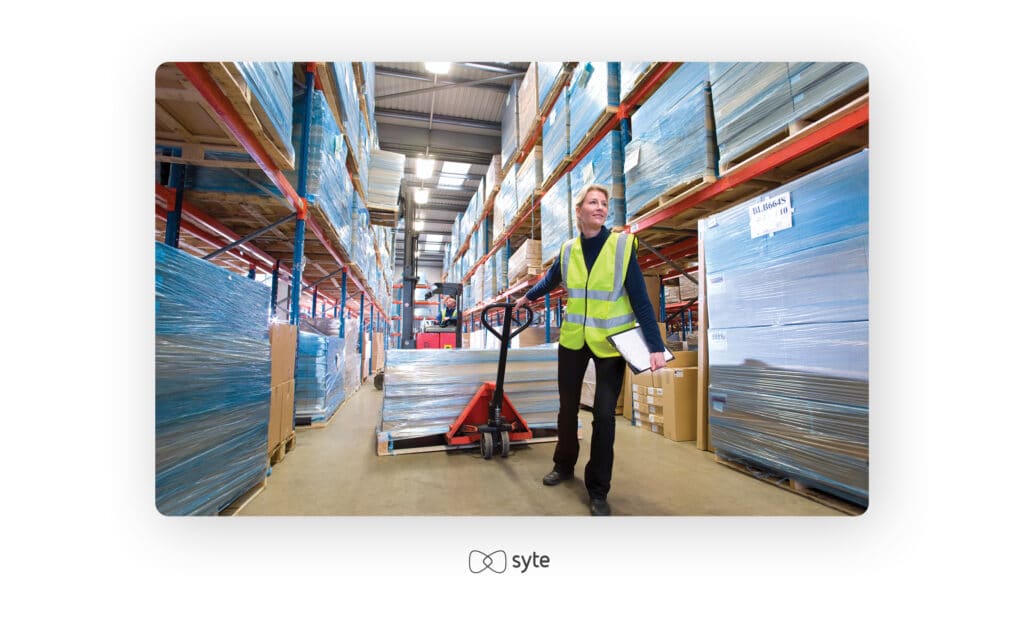Over the last two years, the resale market has seen a major resurgence. It has filled a gap, both for retailers who are dealing with global supply chain issues and for consumers who are increasingly looking for sustainable shopping options.
With the growth of the pre-owned industry online, second-hand marketplaces are becoming more and more popular. As their inventories expand, these businesses are facing new challenges when it comes to optimal product discovery – particularly when user-uploaded content isn’t effectively tagged. One way to address this issue is through AI-powered deep tagging that can automate the process of tagging products, allowing for the utmost accuracy and improved product discoverability.
In this blog, we’ll discuss how automatic product tagging can help resale companies scale their businesses online, as well as key solutions to the unique problems that second-hand marketplaces face in online spaces.
The reCommerce Industry in Numbers
The eCommerce industry has experienced extreme growth since the onset of the COVID-19 pandemic, and it’s only expected to continue over the next few years. In fact, global retail eCommerce sales are projected to climb to $8.1 trillion by 2026, a 56% increase from 2021. The second-hand market is anticipating an even more significant upward trajectory – data forecasts show that the global market will be valued at $218 billion in 2026, more than double its value of $96 billion in 2021.
In the US, technology and online marketplaces were the main drivers of the second-hand market’s expansion. As such, online resale is the fastest-growing sector of the second-hand market, with experts predicting it will quadruple its value by 2026. Consumers also observed the boom, with 70% saying that it’s easier to shop for pre-loved items now than it was five years ago. They’re also turning to the internet for consignment selling, with 75% motivated by having an additional source of income and 20% expressing a desire to participate in the circular economy so products can be used for longer. Meanwhile, 48% said they now sell more pre-owned goods than in the last several years.

Who Is Buying Second-Hand and Why?
The resale market’s momentum is credited mostly to younger consumers. About 42% of Gen Z and Millennial shoppers said they’re willing to shop for second-hand apparel, compared to 32% of Gen Xers and 16% of Baby Boomers. To many customers, pre-loved is their default option, with 41% saying that they look for second-hand items first when buying clothes. At least 62% of Gen Z and Millennial shoppers consider pre-loved products first before purchasing them new. Popular reseller platform Depop claimed that 90% of its users are under 26 while marketplace StockX reported that shoppers under 34 make up 70% of its users.
With ongoing supply chain issues and rising prices due to inflation, most shoppers want to stretch their money. Resale markets provide the perfect opportunity to buy quality items that are still less expensive than new. About 73% of shoppers are motivated by affordability. Recent years have seen another reason emerge, as customers are becoming more aware of the environmental impact of retail. At least 34% of shoppers cited sustainability and reduced waste as reasons to go for pre-owned. Further, four times as many customers are likely to shop from second-hand markets than brands that label themselves as sustainable (defined as reducing negative social and environmental impacts at multiple stages of the supply chain and of the product’s lifecycle).
Challenges for Second-Hand Marketplaces
The internet has become the great equalizer in retail. With low barriers to entry, retailers of all sizes have taken the opportunity to grab a slice of online shopping sales, including second-hand marketplaces. Still, scaling a business isn’t easy or straightforward; over 90% of eCommerce stores earn less than $1 million annually. Here are some of the key hurdles that online resale marketplaces face:
Items not meeting customers’ expectations
Online marketplaces don’t always have control over the items sold over their platforms. Sellers can upload photos that might not translate well over the internet. This highlights the need to upload high-quality pictures from multiple angles (as other eCommerce sites already do), while disclosing any product damages or imperfections.

While the turnover of secondhand listings may be quick, dissatisfaction can also occur. Online retailers see return rates of over 20% compared to just 9% at physical stores. Notably, clothing – the biggest category in resale markets – is also the category with the most returns.
Difficulty with pricing items
Shoppers go into second-hand markets knowing they’ll purchase something used, which generally reduces the value unless it’s very rare and highly sought after. While the price tag should be lower than the original retail price, there are no rules on how much the price cut should be. Besides authenticity, sellers have to consider the product’s condition, historical data from when it was new in the market, customer demand, and market trends, among other factors. The process of marking down (or marking up, in the case of rare luxury items) can feel subjective, which matters when shoppers are mostly price-sensitive.
Product tagging is already a challenge for businesses that sell brand new products. With second-hand marketplaces, companies are operating with a non-traditional inventory model that poses more difficulties in standardizing tags and descriptions. When keywords, descriptors, and tags are lacking or not standardized, marketplaces can’t optimize product recommendations or search results, impacting product discovery and customer experience.

Limited time and attention in online shopping
The internet provides plenty of distractions, which makes holding shoppers’ attention more challenging. Visitors only spend an average of 54 seconds on a website, which gives retailers less than a minute to engage shoppers and convince them to browse. Brands can make it worth their customers’ time with a personalized experience, but this can be difficult when there are thousands or even millions of items for customers to peruse.
Unique items that are hard to find or describe
Shoppers sometimes only have a vague idea of what they want, which can make it hard to describe details that will correctly filter through a brand’s product catalogue and surface relevant results. Still, connecting them to the right products through accurate search results is critical, especially when customers don’t have the luxury of time.
Even with basic keywords, eCommerce sites don’t always return relevant results – 31% of on-site searches end in vain, and 70% of search engines fail to surface results for product type synonyms.

Product Tagging for Online Resale Marketplaces
To guarantee a satisfying and time-worthy shopping session every time, marketplaces need consistent, updated, and accurate product tagging. Product tags are essential in pushing the right products to customers at the right time and making it easy for them to land on highly desired items regardless of their first step or touchpoint. Let’s take a closer look at what product tags are and how they work.
What is product tagging?
Product tagging is the process of assigning and managing labels for each product in your inventory. These labels are descriptors that help identify an item, and they aren’t limited to general information like brand, style, material, or color. Tags can include minute details such as the type of neckline, sleeve length, or specific patterns. This metadata can be used to more efficiently categorize, organize, and create structure in your catalogue.
Product tagging might include scanning images of barcodes or sticky labels when the process is done manually. This can be extremely arduous, especially when there are thousands or millions of products that need managing. It’s also expensive and subject to human error. Manual tagging is no longer the standard, however. With the growing use of AI and machine learning algorithms in eCommerce, automated tagging resolves all these issues by being fast, consistent, and cost-effective.
Visual AI powers automated product tags. Just like the human brain, this kind of AI can understand images and then automatically categorize products through attributes at a granular level. It works by analyzing product photos and then creating text-based tags for each item, listing their colors, sizes, styles, and other details. The magic doesn’t stop there. With a wide lexicon, AI-powered product tags can also assign synonyms and other relevant data, pick up trends, and provide insights into product performance.
The prevalence of online shopping and the tough competition brands face in the online market necessitate friction-free and memorable customer experiences that result in conversions and repeated transactions in the future. The COVID-19 crisis changed shopping behavior and leveled the playing field, with 36% of American consumers switching brands during the pandemic and 73% intending on staying loyal to their new favorite. If a marketplace can capture these shoppers, it can bring more revenue and initiate growth.
Automated product tags make digital shopping easier and seamless. Online stores can lead customers to the right products based on their search queries and site behavior. The data from product tags also addresses customer issues and provides what they need based on context. Retailers who can connect with customers on a personal level are rewarded for it: personalization drives 10-15% of revenue lift.
The Price of Incomplete and Inconsistent Product Tagging
Inaccurate, incomplete, and inconsistent data can lead to significant losses. The following costs of less-than-optimal product tags can spiral to even more undesirable effects:
Customer experience is no small matter. To 73% of consumers, it’s a deciding factor in purchasing. Online shoppers arrive at your site with an expectation: 66% think that understanding their needs and expectations should already be a given. Further, more than four-fifths anticipate that retailers will accommodate their preferences. With these expectations in mind, inaccurate search results or irrelevant recommendations hold so much negative power that they can prompt customers to abandon your site.
Inaccurate demand forecasting and loss of revenue

AI tags provide invaluable data critical in both demand forecasting and inventory management. Even though marketplaces have multiple sellers on their platforms, they can benefit from knowing which products sell and why. When retailers are aware of emerging trends, they can better strategize their marketing and pricing. Marketplaces can also leverage other items that share similar attributes, encouraging faster turnover of products based on AI-powered data.
In the booming online resale market, brands can successfully attain customers’ time and attention with a stellar customer experience. Robust product tags allow you to employ the following product discovery practices that can improve the shopping experiences you deliver to second-hand shoppers.
1. Keep your homepage fresh
Make a great first impression with an enticing homepage. Beyond having the right colors, fonts, and banners, brands should excite shoppers by dynamically showing popular items or products that appeal to individual customers based on the context of their current session. Photos highlighting eye-catching details can also prompt visual inspiration. If you capture customer interest in the 2.6 seconds it takes for the eyes to settle on a website, you’re giving visitors a reason to stay longer.
2. Connect customers to products through visual search
Inspiration can happen anywhere, be it through movies, social media, or a random encounter with a stranger. When that happens, it’s now easy for consumers to snap a photo that they can use to search for products later.

Through visual AI, your on-site camera search function can find the most relevant results with just one photo, thanks to automated tags. And it’s a technology that customers welcome with open arms. About 80% of online shoppers and 63% of mobile shoppers think that new technologies and innovations improve their experience. Meanwhile, 36% of customers have already used visual search when shopping.
3. Rank items according to relevance
Keep customers browsing your website with items that fit their unique tastes or budget requirements. With AI tags, brands and retailers can push more visibility for specific products, including seasonal, clearance, and discounted picks. Product attributes work hand-in-hand with eCommerce merchandising tools so that the most relevant items are shown first. And the presentation matters: 65% of customers retain information visually.
4. Engage customers with personalized recommendations
Keep customers hooked on recommendations. Even if they have a specific item in mind, a glimpse of intelligent product suggestions could prompt them to explore your site and add more products than intended to their carts! About 54% of retailers report that recommendations drive average order value, while 75% of shoppers are likely to buy based on personalized suggestions. Recommendation carousels also come in handy in case items are out of stock or have shipping delays.
5. Improve on-site search
Text-based search functions can leave much to be desired. In fact, 75% of shoppers find it inefficient to locate the right products online and three out of four consumers say that unsuccessful search results lead to lost sales. Visual AI remedies this by automatically tagging product attributes right down to the smallest details, ensuring that search results are accurate and relevant. Customers don’t even have to type in the exact descriptors to get the best results because AI-powered tags can handle synonyms and natural language processing.
Win Second-Hand Shoppers With Visual AI-Powered Product Tagging
eCommerce technologies such as AI-enriched product tags can help second-hand markets grow, as it’s done for traditional eCommerce retailers. With robust tagging, retailers are not only improving the organization and management of their unique inventory but also optimizing the customer experience, encouraging more shoppers to participate in the circular economy.